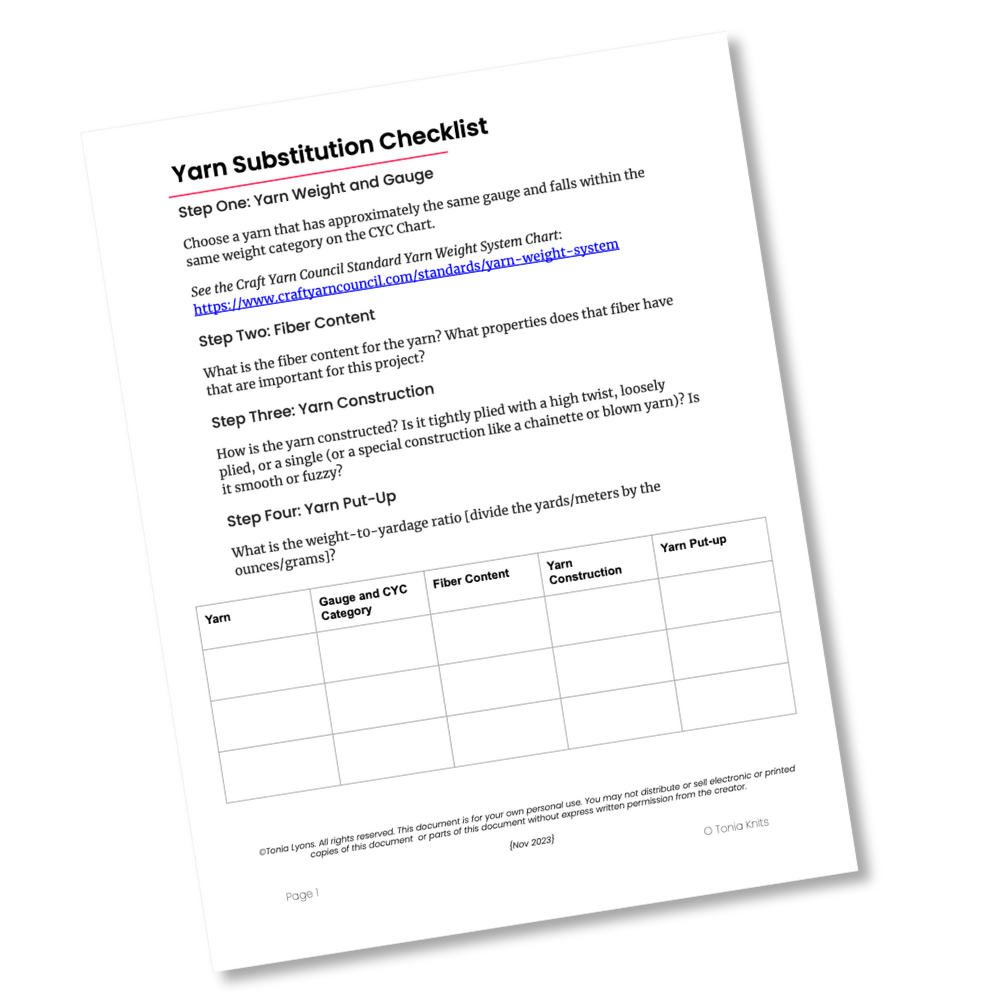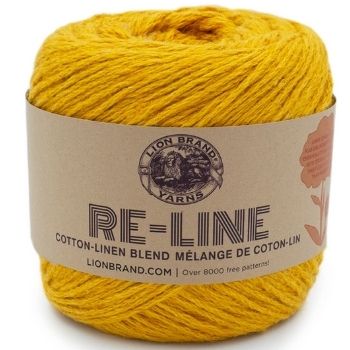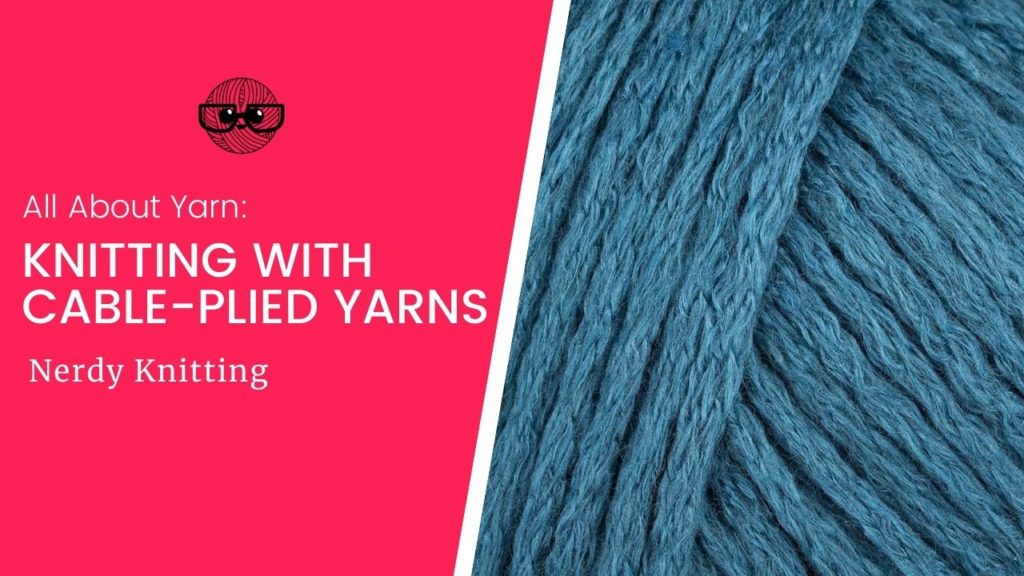Cable-plied yarns (also referred to as cord yarns) are a great option to traditionally plied yarns. When you look closely at a cable-plied yarn, you’ll immediately notice how different the appearance is to regularly plied yarns – it might be hard to explain but the textured appearance is definitely unique.
In this article we’ll explore everything you need to know about cable-plied yarns, including:
- What are Cable Plied Yarns?
- Properties of Cable Plied Yarn
- Knitting with Cable Plied Yarns
- Where to Buy Cable Plied Yarns
Let’s dive into each of these topics so you’ll know when you should give this interesting yarn construction a try.
Image credit: Debbie Bliss Yarns
Some links below are affiliate links. If you click through and make a purchase I may receive a small commission at no extra cost to you. See the disclosure policy for more information.
What are Cable Plied Yarns?
Commercially and hand-spun yarns are both produced by carding, combing, and spinning fibers into singles. Commercially produced yarns use machines and large mills to perform these steps but they can be done by hand as well with smaller devices.
The singles that are created are then twisted (plied) together in any combination or number. The plying process can vary from one yarn to the next – one might not be plied at all and remain a single, two or three might be plied together, or even two plied singles might then be plied together with another pair of plied singles (or even more). There are many ways to vary this combination of plying yarns together.

Cable-plied yarns are one of those options – they are made by plying together (S-spun) several already-plied (2-ply Z-spun) strands with the final twist going in the opposite direction (in this case a Z-spin). These strands are usually very fine with fibers that are carefully combined so after they are plied together, the resulting cable or cord is smooth, strong, and has a distinctive, high-twist, textured appearance that immediately shows that it isn’t a standard ply construction.
Cable-plied yarns also refer to yarn that is similar to chainette yarns – they look almost like small I-cords instead of standard plied yarns (see image here).
Crepe yarns also fall into this category (a cousin to the cable-plied yarns) because they are strands that are plied together and then plied again. The difference is that it combines 2 and 3-ply strands and the finished texture is slightly different and more nubbly than the standard cable-plied yarns.
These differences are even more apparent between commercially manufactured yarns and hand-spun yarns.
This is a great construction method for short-staple fibers that are more difficult to spin – with traditional methods these yarns are soft, not very strong, and prone to pilling. When these fibers are cable plied, the plying provides additional structure and strength which minimizes or eliminates all of these factors from traditional plying and makes the fibers more durable.
This construction method is also a good option for plant fibers which are generally inelastic and heavy. When used in a traditionally plied yarn, finished projects are heavy and have a tendency to sag and lose their shape. If a cable-plied yarn is used instead, the plying method provides additional structure that makes it less likely that the garment will lose its shape.
Recommended article: Chainette Yarn: Everything You Need to Know
Properties of Cable-Plied Yarns
While every yarn is different because the fibers used add their own unique properties to that specific yarn (cable-plied yarns included), cable-plied yarns have some distinct traits just because of the construction method.
Like their close relative, the chainette (or chained) yarns, cable-plied yarns are very elastic and exceptionally strong – even if the fibers used to create the yarn aren’t particularly elastic or strong. The structure of the cable-plied cord adds additional strength (even to very weak fibers) and more elasticity (even to inelastic fibers)
Cable-plied yarns (and their cousin, crepe yarns) are strong and resistant to pilling because of the high twist and plying method. So even short, soft fibers with a tendency to pill won’t have that problem if they are cable plied.
Get the Yarn Substitution Checklist
Fill in the form below to get a free copy of the Four Step Checklist for substituting yarn. Use it for your next knitting project!

Knitting with Cable-Plied Yarns
Cable-plied yarns often take fibers that are difficult to knit with or hard on the hands (especially inelastic fibers like cotton) and make them much easier to enjoy. If you’ve ever knit with cotton you may notice that your hands are tired after awhile. That’s because cotton has no elasticity and it creates more pressure on your hands as you’re knitting. But when cotton uses a cable-plied structure, the construction of the yarn adds some elasticity to the fiber – making it so much easier to knit.
This construction is most commonly used for short staple fleece (because the high twist gives the fibers additional strength and durability) but you’ll also find it used for plant based fibers as well. A cable-plied construction gives these fibers some additional elasticity (something that plant fibers inherently lack).
Cable-plied yarns are great for highly textured stitch patterns like seed stitch, moss stitch, and cables. The high twist of the yarns really shows off these textures. Of course, every yarn is different and a cable-plied yarn with a fuzzy appearance won’t provide strong stitch definition. If you prefer more rustic looks with yarns that are more nubbly or textured, cable-plied yarns aren’t a good choice.
It’s very important to swatch with cable-plied yarn – especially if you’re considering using it for a pattern that uses a more traditionally constructed worsted spun yarn. You’ll need to check your gauge to determine if it’s a proper substitute as well as ensure that the high twist, textured nature of a cable-plied yarn works for the stitch pattern – but it varies from pattern to pattern and yarn to yarn.
Where to Buy Cable-Plied Yarns
Cable-plied, corded, and crepe yarns are getting more common and easier to find as more yarn brands are using this construction method. While it’s most often used for short staple animal fibers that are more difficult to spin, you can find cabled yarns that use plant fibers too. Below you’ll find a few selections for various cable-plied and crepe yarns using a variety of fiber sources.
Plant Based Yarn Blends

Cable-plied and crepe yarns are often used for short-staple fleece fibers but you can find this structure used for plant fiber yarns as well since plant fibers need some additional structure as well as lightness and elasticity (all of which are added when yarns are cable-plied). Here are a few recommendations for cable plied yarns that use plant fibers:
- Bergere de France Pur Coton (100% cotton)
- Lion Brand Re-Line (cotton & linen)
- Lion Brand 24/7 Cotton (100% cotton)
- DMC Natura Just Cotton (100% cotton)
- Debbie Bliss Piper (cotton & viscose)
- Lana Grossa Solo Lino (viscose & linen)
Animal Fiber Yarn Blends

While you can find cable-plied and crepe yarns that use plant fibers, it’s commonly used for animal fibers – especially for short-staple fibers that can be hard to spin on their own or be more likely to pill. These characteristics are minimized or eliminated with a cable-plied yarn construction. Here are a few yarn recommendations:
- Cascade Venezia (Merino wool & silk)
- Koigu Kersti (100% Merino wool)
- Lang Yarns Mulberry Silk (100% silk)
Other Cable-Plied and Crepe Yarn Blends
While plant and animal fiber blends are both common for cable-plied and crepe yarns, there are some more that combine the two types of fibers. You’ll also find cable, crepe, and corded yarns that use synthetic fibers as well. Here are a few examples:
- Debbie Bliss Sita (silk, cotton & polyamide)
- Sirdar No. 1 (acrylic & nylon)
- Berroco Comfort (nylon & acrylic)
Cable or cord yarns are great for knitting – and now you know when it’s suitable to use one of these types of yarns. If you’re looking for more information on various yarns and fibers for knitting, take a look at the resources and articles linked below.
More About Yarns & Fibers
- The Knitter’s Book of Yarn by Clara Parkes (available at Amazon)
- Yarn Substitution Made Easy by Carol J. Sulcoski (available at Amazon)
- The Fleece & Fiber Sourcebook by Carol Ekarius & Deborah Robson (available at Amazon)
